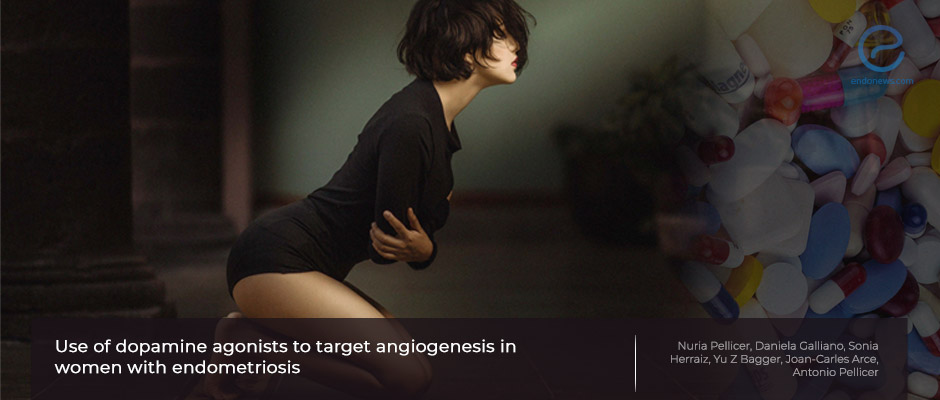Targeting Endometriosis From a Different Angle
May 7, 2021
Dopamine agonists could be used to manage endometriosis while maintaining ovulation.
Key Points
Highlights:
- Treatment with dopamine agonists could help reduce the size of lesions and minimize pain in patients with endometriosis.
Importance:
- This could be a new path of targeting the disease without compromising women’s reproductive abilities.
What's done here:
- Researchers reviewed experimental and clinical data supporting the potential benefits of dopamine agonists for reducing angiogenesis in targeting and treating endometriosis.
Key results:
- Dopamine agonists downregulate proangiogenic and upregulate antiangiogenic pathways blocking cellular proliferation and reducing lesion size in experimental models of endometriosis.
- Inhibiting vascular endothelial growth factor (VEGF) signaling reduces nerve fiber density in endometrial lesions.
- Treatment with dopamine agonists downregulates serpin-1, which encodes for plasminogen activator inhibitor-1 (PAI-1).
- Pentoxifylline, a PAI-1 inhibitor, increases pregnancy rates in women with endometriosis.
Lay Summary
Dopamine agonists could help reduce the size of endometriosis lesions and minimize pain, while maintaining ovulation, according to a new study published in the scientific journal Human Reproduction. This constitutes a completely different approach in targeting endometriosis according to Dr. Nuria Pellicer and the co-authors of the study.
In the present study, the team of researchers reviewed experimental and clinical data to assess the feasibility of reducing angiogenesis using dopamine agonists to treat endometriosis.
Angiogenesis or the formation of new blood vessels around lesions is a hallmark of endometriosis. The results of preclinical studies have shown that dopamine agonists such as bromocriptine, cabergoline, and quinagolide downrgulate biological processes that promote angiogenesis while upregulating processes that block it. The result was the blockage of cell proliferation and a reduction in the size of endometriotic lesions.
It is thought that dopamine agonists inhibit the secretion of vascular endothelial growth factor (VEGF) and also act on the growth factor’s receptors inhibiting their function. The inhibition of VEGF signaling also reduces nerve fiber density in lesions.
Research in humans has shown that quinagolide can reduce lesion size and nerve fiber density in lesions and that other dopamin agonists can reduce both the size of endometrioma and pain.
Moreover, treatment with dopamine agonists can reduce the activity of a gene called, serpin 1, which encodes for plasminogen activator inhibitor 1 (PAI-1). PAI-1 levels are higher in women with deep infiltrating endometriosis, and high levels are associated with worse period pain. Reducing levels of PAI-1 with pentoxifylline, which can act as a dopamine agonist, has also been shown to increases pregnancy rates in women with endometriosis.
“The data support the use of [dopamine agonists] in the medical management of endometriosis to reduce lesion size and pain while maintaining ovulation,” the researchers wrote. They added that a combined approach using dopmaine agonists and pentoxifylline yould be “a smart way of targeting the disease from a completely different angle”.
Research Source: https://pubmed.ncbi.nlm.nih.gov/33355352/
angiogenesis dopamine agonists lesion size pain serpin-1 plasminogen activator inhibitor 1 PAI-1 Pentoxifylline

